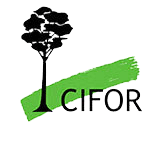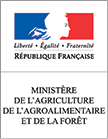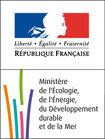
Four years ago, sitting in the freshman dorm room I shared with five (yes, five) other girls, I was propositioned for marriage via Facebook. The summer before my senior year of high school, I spent almost two months living and working in a small rural community in Matagalpa, Nicaragua. The electricity was unreliable (even more so due to the rainy season), there was no running water, and it was not uncommon for community members to worry about how they were going to feed their families each week.
These hardships, and a lack of available work in coffee cultivation, forced my host cousin to leave for the capital, Managua, in search of trabajo. Of course I left him my email address, but I knew the chances of finding an email from him in my inbox were slim to none. Well, I was right that his communication did not come in the form of an email, but as a Facebook message almost two years later.
He asked how I was and updated me on all the major family events I had missed since I left. He was still looking for work, doing odd jobs here and there. However, he had heard that sometimes people come to the United States and get married so that they can stay and work. I could see where this was going, so I told him that it was pretty rare, especially due to strict government oversight for suspected marriages of this nature. Nevertheless, he was not discouraged.
It was then that he finally popped the question: ‘would I be willing to marry him so he could find work here in the US?’ It wasn’t quite how I had pictured my first marriage proposal. But all joking aside, I really did empathize with him. I knew his family—his wife and baby girl—but this was beyond anything I could possibly do to help. So I told him I couldn’t. School, parents…he understood, but was clearly disappointed.
My experience in Nicaragua was incredibly eye opening; but this experience, removed from the immediate culture, actually increased my awareness of the true desperation. I had been in a small, tight-knit community where resources were limited, but the size meant people got by together. Everyone in La Lima, including my family, had put on a brave face for much of my stay. However, the reality was that each day was a struggle.
To find any real opportunity for social advancement, one would have to leave the small farming village; so mi primo had done just that. However, he was met with the cruel reality – that is a lack of sustainable urban employment in underdeveloped nations.
Because of this experience I became increasingly aware of not only the economic conditions in the developing world, but also the widespread lack of opportunity. Nonetheless, despite this lack of opportunity, there was no lack of hard work and entrepreneurial spirit. For these reasons I chose to pursue bachelors degrees in finance, anthropology and entrepreneurship and I’m now doing a masters in Anthropology and Development Management at the London School of Economics.
It is a combination that has given me the foundational skills to explore and understand development problems; and subsequently, the ability to think more critically about global social and economic issues in order to contribute to constructive solutions. This is the primary reason why I chose to participate in the finance and trade landscape challenge at the Global Landscapes Forum 2015.
Megan McDermott is one of the 10 young champions who will work on the “Finance and Trade” Landscape challenge with Youth program’s partner: Livelihoods Venture
Learn more about the Global Landscapes Forum’s Youth program, meet our 50 youth champions and discover the 5 Landscapes challenges they will take up, in December, in Paris.





































